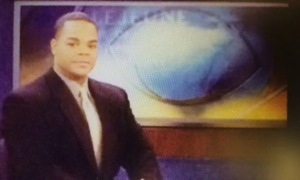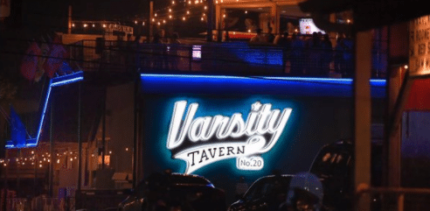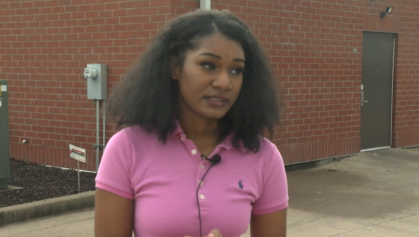Vester Lee Flanagan, II, known by his on-air name Bryce Williams, was a Black journalist who fatally shot a white TV anchor and a cameraman during a live interview in Roanoake, Va. on Wednesday.
Flanagan shot WDBJ reporter Alison Parker and cameraman Adam Ward, and wounded Vicki Gardner, the woman the journalists were interviewing. Later, Flanagan, who had been fired from the station in 2013, reportedly died Wednesday from a self-inflicted gunshot wound. His firearm was reportedly purchased legally from a Virginia gun store.
ABC News provides an account of Flanagan‘s 23-page manifesto and suicide letter, which Bryce had faxed to the news organization two hours after the shooting. According to ABC News, Flanagan had been pitching a story to the network for the past two weeks. In the manifesto, in which the writer says, “MY NAME IS BRYCE WILLIAMS,” he writes that his shooting was a reaction to the racist Charleston church shooting.
“Why did I do it? I put down a deposit for a gun on 6/19/15. The Church shooting in Charleston happened on 6/17/15…” he wrote. “What sent me over the top was the church shooting. And my hollow point bullets have the victims’ initials on them,” he said, adding, “As for Dylann Roof? You (deleted)! You want a race war (deleted)? BRING IT THEN YOU WHITE …(deleted)!!!”
According to ABC News, Flanagan’s letter had praise for other mass shooters such as the Columbine High School killers and the Virginia Tech shooter, Seung Hui Cho, whom he referred to as “his boy.” Flanagan reportedly used a Glock 19, similar to the weapon used by Cho.
Further, Flanagan wrote in his letter a list of grievances, in which he said he had suffered bullying, racial discrimination and sexual harassment in the workplace. Flanagan had lodged complaints against the two people he killed, tweeting: “Alison made racist comments” and “Adam went to hr on me after working with me one time!!!”
In his manifesto, Flanagan said he encountered “nasty racist things” while working at WDBJ, which led to him suing the station.
“I marched down to the courthouse and sued WDBJ7 by myself and they settled! HA!” He added: “I can remember one day in particular… leaving the courthouse… feeling overwhelmed… confused… even some fear. But by golly I knew I HAD to fight. … They truly f—-d with my life and caused an awful chain of events.” He says he even killed his cats in a forest “because of them.”
“Hell yeah, I made mistakes,” Flanagan said, noting that he “should not have been so curt” with photographers in Roanoke. “[B]ut you know why I was? The damn news director was a micromanaging tyrant!!”
And, he writes, “the photogs were out to get me at WDBJ7… one went to HR after only working with me one time… the chief photog told his troops to [record video of] me if they saw be doing something wrong.”
Flanagan also claimed that after leaving WDBJ, he was offered a job with a station in Pennsylvania, but WDBJ convinced the station to rescind their offer.
“I got to the point, this time around, where I wasn’t even looking for a job. I don’t need to deal with workplace bullies anymore. THAT is what lawmakers need to focus on,” he wrote. “Yes, it will sound like I am angry. I am. And I have every right to be. But when I leave this Earth, the only emotion I want to feel is peace.”
In his manifesto, he said he faced “tough times” and “financial crashes” and used to work as a male escort. He also offered that “Yeah I’m all f—– up in the head.”
“[I] tried to pull myself up by the bootstraps… The damage was already done and when someone gets to this point, there is nothing that can be said or done to change their sadness to happiness. It does not work that way. Meds? Nah. It’s too much.”
Many media accounts have focused more on Flanagan’s alleged workplace behavior and his former coworkers’ negative impressions and criticisms of him, with scant detail on the claims of racial discrimination Flanagan lodged against his employers, and the nature of the allegations he pursued in his lawsuit.
For example, CNN cited Flanagan’s alleged performance issues at work.
“There were some issues with him and his personality that kind of spiraled down, and that’s why we had to get rid of him,” said Don Shafer, who managed Flanagan.
The New York Times discussed Flanagan’s “turbulent tenure” at the TV station and referenced exhibits in his lawsuit, without providing more detail on the extent of his claims. One dispute Flanagan reportedly had with a coworker “resulted in one or more of your co-workers feeling threatened and uncomfortable,” according to an executive in a memorandum. “We want you to work on the tone of your interpersonal relationships and exercise great care in dealing with stressful situations or disagreements and your response to them,” the memo added.
The executive, Dan Dennison, noted two months later that Flanagan’s “behaviors continue to cause a great deal of friction.”
“We will continue assisting you with your professional growth and development, but we can no longer afford to have you engage in behaviors that constitute creation of a hostile work environment,” added Dennison, who told CNN that Flanagan had a long series of complaints against coworkers that were never substantiated.
Flanagan was fired with a police escort, and he sued the station for racial discrimination, wrongful termination and retaliation. He had complained of racial epithets used against him, and in one memorandum he was quoted as saying, ”You know what they did? They had a watermelon back there for a week…”
The case was dismissed last year after a judge said the matter had been “fully and completely resolved and compromised.”
Gawker reported that Flanagan’s employer required him to seek mental health counseling. And the Daily Mail reported that Flanagan sued a Florida news station in 2000, alleging, among other things that his boss called him a “monkey,” a supervisor said “blacks are lazy” and other station officials made jokes about Ebonics and a Black murder suspect having “collard greens” stuck in his teeth.
Meanwhile, although scenes of Black death—particularly the killing of Black people by white officers as caught on bystanders’ cellphone cameras, police body cameras and dashcams—have been televised constantly in recent months, media have shown a reluctance to broadcast this recent video of a Black man killing white people in a fit of rage.
Finally, more details on the racial discrimination that individuals such as Flanagan allegedly experience could provide some context regarding the difficult circumstances under which Black people grapple with racial discrimination and white supremacy in order to get ahead, and the effects that racism and racial violence have on PTSD and mental health disorders in Black people.
As Time magazine reported, workplace discrimination is a chronic source of stress for Black people. Further, the Black Lives Matter movement is now focusing attention on how discrimination impacts the mental health of African Americans, a timely and crucial issue, yet one which receives little attention.



